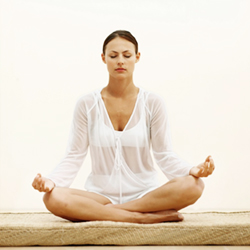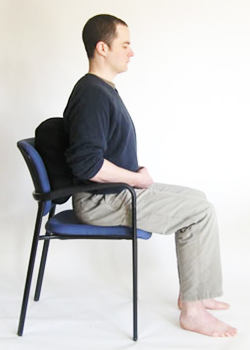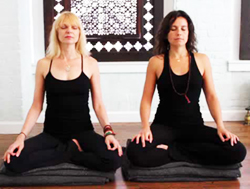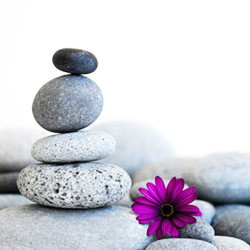









Meditation is the personal experience of going beyond one’s thoughts, worries and upsets, and being in a state of peace and calm. In meditation, one is fully alert and aware but free of the unnecessary thoughts or worries that lead to many of life’s day to day stresses.
This state of peace and calm occurs spontaneously when one learns how to focus on the experience of the present moment.
With the hectic pace and demands of modern life, many people feel stressed and over-worked. It often feels like there is just not enough time in the day to get everything done. Our stress and tiredness make us unhappy, impatient and frustrated. It can even affect our health. We are often so busy we feel there is no time to stop and meditate! But meditation actually gives you more time by making your mind calmer and more focused. A simple ten or fifteen minute breathing meditation as explained below can help you to overcome your stress and find some inner peace and balance.
Meditation can also help us to understand our own mind. We can learn how to transform our mind from negative to positive, from disturbed to peaceful, from unhappy to happy. Overcoming negative minds and cultivating constructive thoughts is the purpose of the transforming meditations. This is a profound spiritual practice you can enjoy throughout the day.
A SIMPLE BREATHING MEDITATION
The first stage of meditation is to stop distractions and make our mind clearer and more lucid. This can be accomplished by practising a simple breathing meditation. We choose a quiet place to meditate and sit in a comfortable position. We can sit in the traditional cross-legged posture or in any other position that is comfortable. If we wish, we can sit in a chair. The most important thing is to keep our back straight to prevent our mind from becoming sluggish or sleepy.
"The first stage of meditation is to stop distractions and make our mind clearer and more lucid."
We sit with our eyes partially closed and turn our attention to our breathing. We breathe naturally, preferably through the nostrils, without attempting to control our breath, and we try to become aware of the sensation of the breath as it enters and leaves the nostrils. This sensation is our object of meditation. We should try to concentrate on it to the exclusion of everything else.
At first, our mind will be very busy, and we might even feel that the meditation is making our mind busier; but in reality we are just becoming more aware of how busy our mind actually is. There will be a great temptation to follow the different thoughts as they arise, but we should resist this and remain focused single-pointedly on the sensation of the breath. If we discover that our mind has wandered and is following our thoughts, we should immediately return it to the breath. We should repeat this as many times as necessary until the mind settles on the breath.






